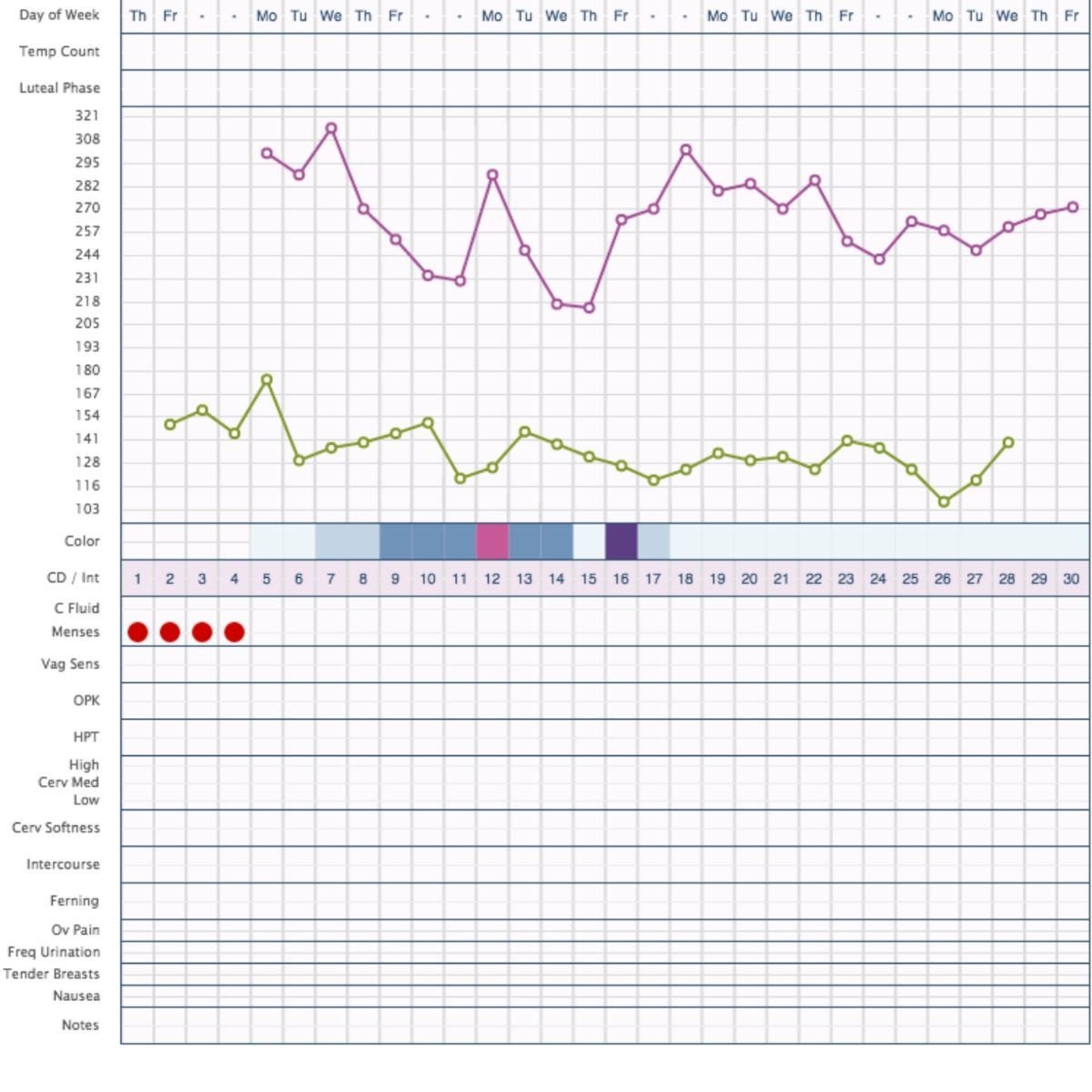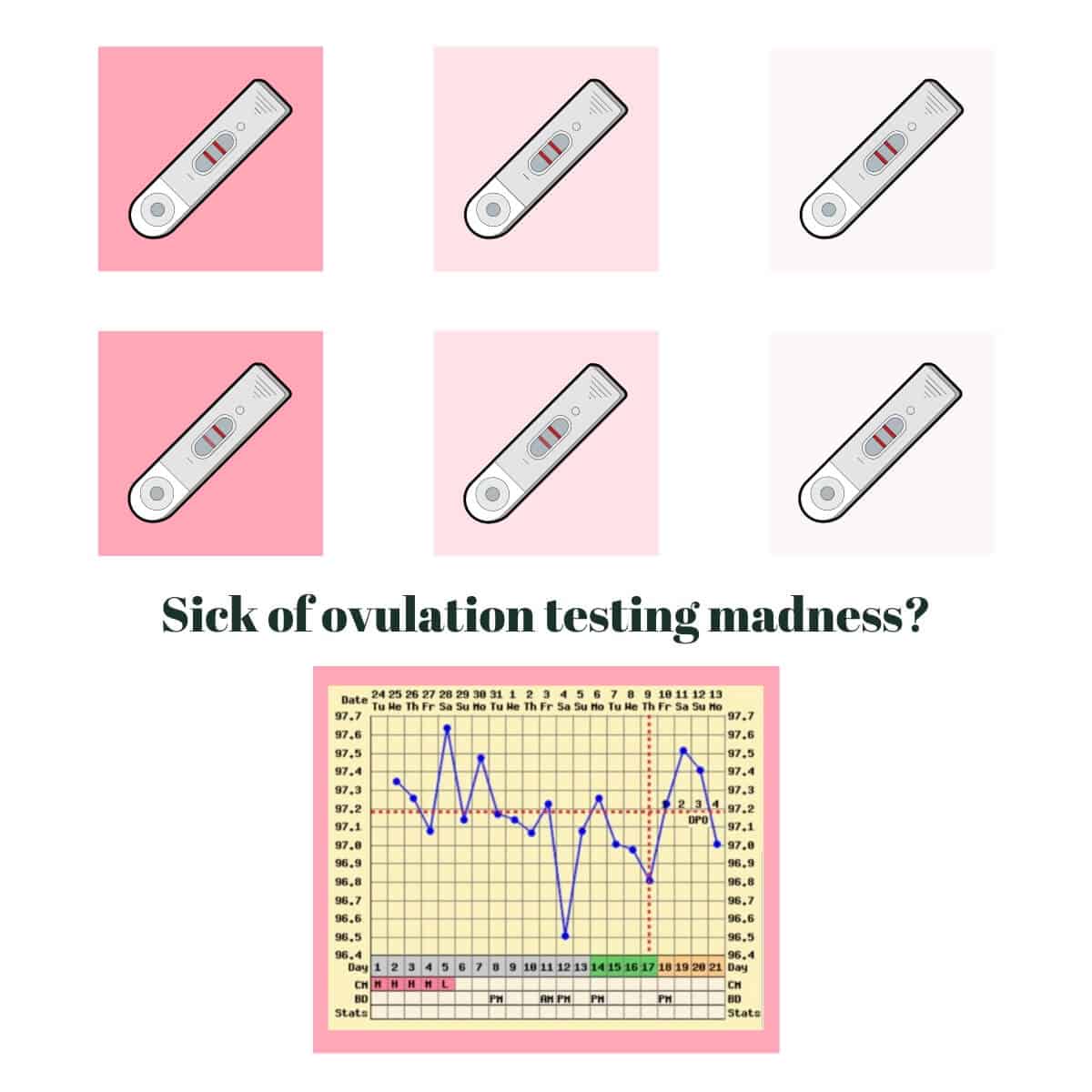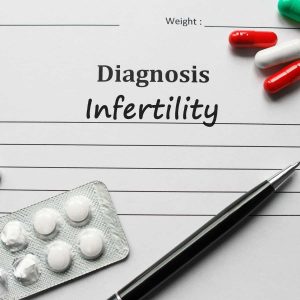I’d spent too many months crying in bed the day my period came. After a year-and-a-half of unsuccessfully trying to conceive (TTC), I made a list of questions to ask my doctor. I’d been tracking fertility using ovulation predictor kits and ovulation tracker apps, but nothing was working. Month to month, I was heartbroken.
The night before my doctor’s appointment, while actively working on my list of infertility questions, I felt a stabbing pain in my left breast. I immediately took a pregnancy test, only to discover that I’d finally, FINALLY gotten pregnant.
When that pregnancy ended in heartbreak a month later (I found out the pregnancy of my dreams was a blighted ovum), I was determined to get pregnant again as quickly as possible. The period tracking apps hadn’t cut it; I needed something more.
*Note: This is a sponsored article on behalf of Fairhaven Health, meaning I have been compensated for this article. All the content included is my honest opinion, and this is my true story. I only work with brands and recommend products I personally use and love.
No more peeing on ovulation test strips every month. It was time to start fertility tracking with an actual monitor, a high-tech fertility tracker that could help me conceive more quickly next time.
I never imagined how much I was about to learn about my body, and the entire TTC process.

This site contains affiliate links, meaning that we earn a small commission for purchases made through our site. We only recommend products we personally use, love, or have thoroughly vetted.
What is a fertility tracker?
A fertility tracker, or fertility monitor, is a device that monitors hormone levels within your body, tracking your cycle to tell you when you’re the most fertile.
They work differently than other ways to track ovulation—like basal body temperature testing and peeing on an ovulation predictor stick—in a number of ways:
- They follow you throughout your entire cycle
- They connect with an electronic device to help you visualize your cycle
- They track multiple data points, rather than just 1 (e.g. basal body temperature or LH [luteinizing hormone] surge), combining those data points to give more accurate readings
- Many adjust to your cycle over time, helping you learn about your body
#4 is what happened to me. I know so much about my body now!
What’s wrong with tracking your fertility using cheaper methods?
There is absolutely nothing wrong with using ovulation predictor kits (OPKs) or tracking using basal body temperature (BBT). There are simply pros and cons to each approach.
For me, period tracker apps and OPKs didn’t work. We’ll get to that in a minute.
BBT (sometimes called “the temperature method” or “temping”) is more accurate, but it provides a limited window of time to know you’re fertile. It also takes a few months of getting to know your cycle before you can analyze the data to predict a fertile window.
These options are way cheaper, so if you’ve got the time to wait and want to save some money, I still recommend fertility awareness methods that are less expensive.
But in my story, ovulation calculators on my phone and OPKs steered me further in the wrong direction. I never used BBT testing because patience isn’t my thing.
How to track your fertility with irregular periods
Women with irregular periods are usually best suited for fertility monitors over traditional ovulation tracking methods, and certain fertility monitors are recommended for irregular periods and PCOS.
The fertility monitor that changed my journey is no longer on the market, and I’m heartbroken. But there are plenty of other amazing options that remain on the market. Here are a few of my favorite:
As a result, its results are customized, not based on a norm that your cycle doesn’t fit.
For example, my cycle doesn’t fit the “norm” either, but using a monitor completely and drastically increased my chance of getting pregnant and changed my understanding of my own reproductive health.
How fertility tracking with a monitor changed my life
After my first miscarriage, I was determined to get pregnant again as quickly as possible. At that point, I desperately wanted to have a baby, and no part of me believed I would experience recurrent miscarriage, so I figured the next pregnancy would be the one that stuck.
Oh how much I didn’t know about women’s health.
After my miscarriage and subsequent D&C, I waited for my cycle to return and then started using my new fertility tracker. After taking a year-and-a-half to conceive the first try, I got pregnant that same cycle.
The beginning of recurrent miscarriage
While using a fertility tracker got me pregnant, it sadly wasn’t enough to keep me that way. But in a weird way, that also made it all the more essential in my fertility journey.
Ultimately, the outcome I desired was a baby, and recurrent miscarriage was preventing me from getting there.
But there are 2 reasons tracking my fertility played an integral role in the journey, even once miscarriage became almost a way of life for me:
- I had 3 losses before we started recurrent miscarriage testing, and it took 4 pregnancies before we were able to discover the cause of my miscarriages, which ultimately led to my son, Jack. I was able to go through this process so much faster because I got pregnant so easily.
- I learned things about my body that I wouldn’t have otherwise known, and these things will serve me well if we decide to try for a second child at any point. (More about that in the next 2 sections.)
Fertility tracking helped me through recurrent miscarriage
While many women are able to begin recurrent miscarriage testing after 2 losses, the norm remains to wait until someone has lost 3 pregnancies to be referred to a fertility specialist.
No one wants to go through this misery, but time is something most of us don’t talk about when discussing pregnancy loss.
You see, when you’re trying to conceive, every month feels long, and for me, a new menstrual cycle felt much like the end of the world.
But when you add miscarriage to that mix, the emotions are seriously amplified. Part of you is afraid to get pregnant because it means you could miscarry again, while another part of you is desperate to have the baby you thought you would already have.
Each month of trying to conceive is its own special level of hell, a level I wouldn’t wish on anyone. Your entire world feels out of control, and being able to control what you can is a mental health lifesaver.
Using a fertility monitor allowed me to know I was controlling everything I could about my fertility. I may not have been able to stay pregnant, but damn it, I can get pregnant, and it was up to my body and my doctors from there.
And because I was finally able to control my ability to conceive, I got pregnant much faster. In fact, try to wrap your brain around this one–after a year-and-a-half of trying to conceive, I got pregnant 4 more times in less than a year because of what I learned about my body from my fertility monitor.
And the last time gave me a precious son.
What I learned about my body
While I’m most thankful I chose to use a fertility monitor because it gave me so much control when I felt like I had so little, I cannot ignore all that I learned about my body.
How’s this for madness?
I’d used ovulation predictor kits time and time again. If you’ve ever used those, then you know how easy they are, in theory. You pee on a stick, wait for the two lines to be equally dark, and have sex the second they are.
Sounds simple, yes? But there are a few major drawbacks:
- I can’t tell you the number of times I had to post to Trying To Conceive (TTC) boards online to ask people’s opinion about whether or not my reading was positive. And I still see this in groups so often!
- OPKs work by predicting an LH surge, which indicates that ovulation is about to occur. Once that surge is predicted via OPK, you’re left to assume you’ve ovulated. You stop peeing on a stick every morning, and you’re finished.
Here’s where the craziness starts.
Apparently, during most cycles, I have 2 LH surges per month! WHAT?
So, when I was using OPKs, I’d see a surge, try to get pregnant, and then stop trying. But I don’t ovulate after the first surge; I ovulate after the second one. So when fertility tracking apps said I was a 2-3 days before ovulation, I was actually a week-and-a-half before ovulation.
I thought I was struggling with infertility when, in reality, I missed my fertility window during almost every cycle within the year-and-a-half we tried to conceive.

I learned about this abnormality from my fertility monitor
If you have a perfect cycle, well…I envy you. But also, tracking fertility isn’t that hard for you, and if you used a fertility monitor, it’d probably just confirm what you already knew.
But my readings were whacky. I had no idea what to make of them.
Luckily, my monitor came with with 3 features that especially helped me:
- The ability to calculate 2 possible ovulation dates
- Confirmation of ovulation (it’s clinically proven to confirm ovulation with 98.3% accuracy; only a vaginal ultrasound can confirm with 100% certainty)
- An amazing support board where you can post your chart and questions about it, and get answers not only from other community members, but from charting experts who are on staff
It was these unusual readings that led one of the support specialists to realize that I had the indicators of ovulation, but then didn’t ovulate.
I would ovulate nearly a week later, which the monitor (it changes colors to show you fertile days) both showed and confirmed after ovulation.
She helped me figure this out on month 1, and I found it interesting and got pregnant. Then, after miscarriage, I noticed this happened AGAIN.
It took 2 cycles to conceive, and I conceived 4 times using my fertility monitor, every single time seeing this same trend.
This is why OPKs hadn’t worked! This is why I went from unable to conceive to seemingly hyper-fertile.
The knowledge of my hormonal fluctuations admittedly made me a bit more frustrated with my body during a time when I already felt like I was physically broken.
But it had a really positive impact, as well. In addition to getting me pregnant so we could move through an insane fertility journey, it also allowed me to understand my body better, and to feel a bit more in control when the whole world felt completely uncontrollable.
When to talk to a doctor about how to track fertility
For me, my fertility journey was not one where I was able to use a fertility tracker and suddenly fix the problem. It turned out I had a uterine abnormality that prevented me from successfully carrying pregnancies, and I needed specialists to discover and fix it.
Fertility tracking and medical care are not mutually exclusive. You can do both!
It’s recommended that you seek medical advice after a year of trying to conceive unsuccessfully. Why I waited a year and a half, I honestly don’t know.
But if it were me, I would give fertility monitoring a chance before choosing to seek medical care for fertility testing and treatment. Why? Cost.
Why not start using a fertility monitor to learn about your cycle and see if you can conceive on your own? If it doesn’t work, then when you hit the one year mark, you have lots of good data to take to your doctor!
Have you used a fertility tracker to monitor ovulation? What’s your favorite?
Tracking Fertility Q&A
There are many ways to track fertility, from apps on your phone to ovulation predictor kits to technologically advanced fertility monitors. The best way to track your fertility depends on your body and budget.
The best fertility tracker depends on your body and budget, but by far my favorite is the Mira fertility monitor, which solved a lot of mysteries about my body and reproductive cycle.
In theory, you’re most fertile 12-14 days after your period. This time frame, however, is only accurate for women whose hormones fluctuate only minimally and who have 28-day cycles. For other women, tracking fertility can help determine the most fertile days.
Signs of fertility include egg white cervical mucus, an increased sex drive, ovulation pain, and more. Fertility tracking is often the best way to learn your body’s signs.









